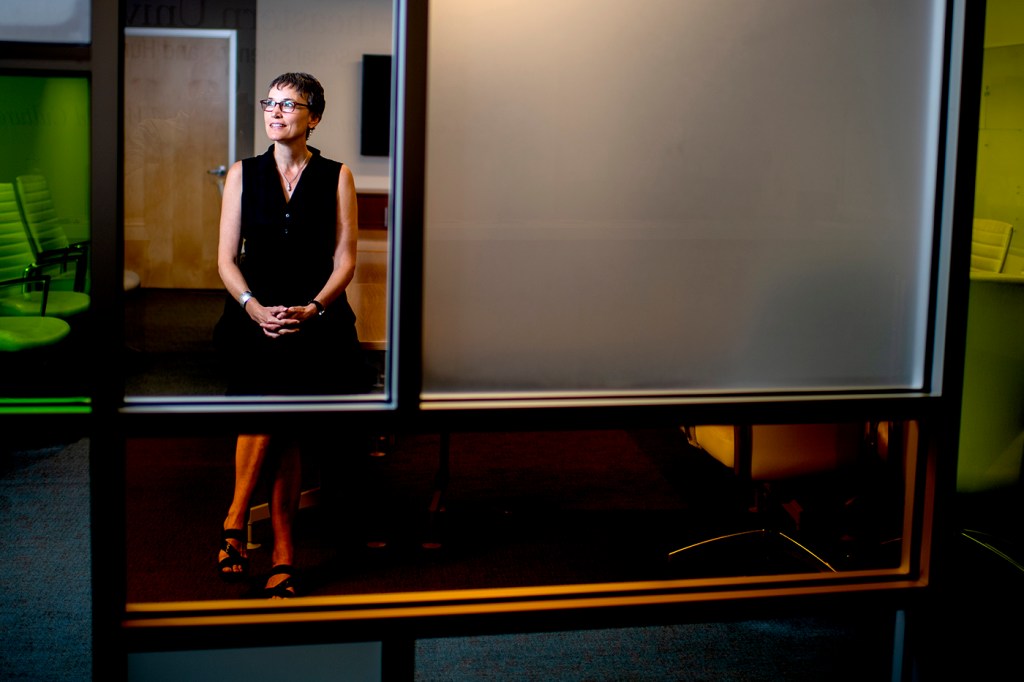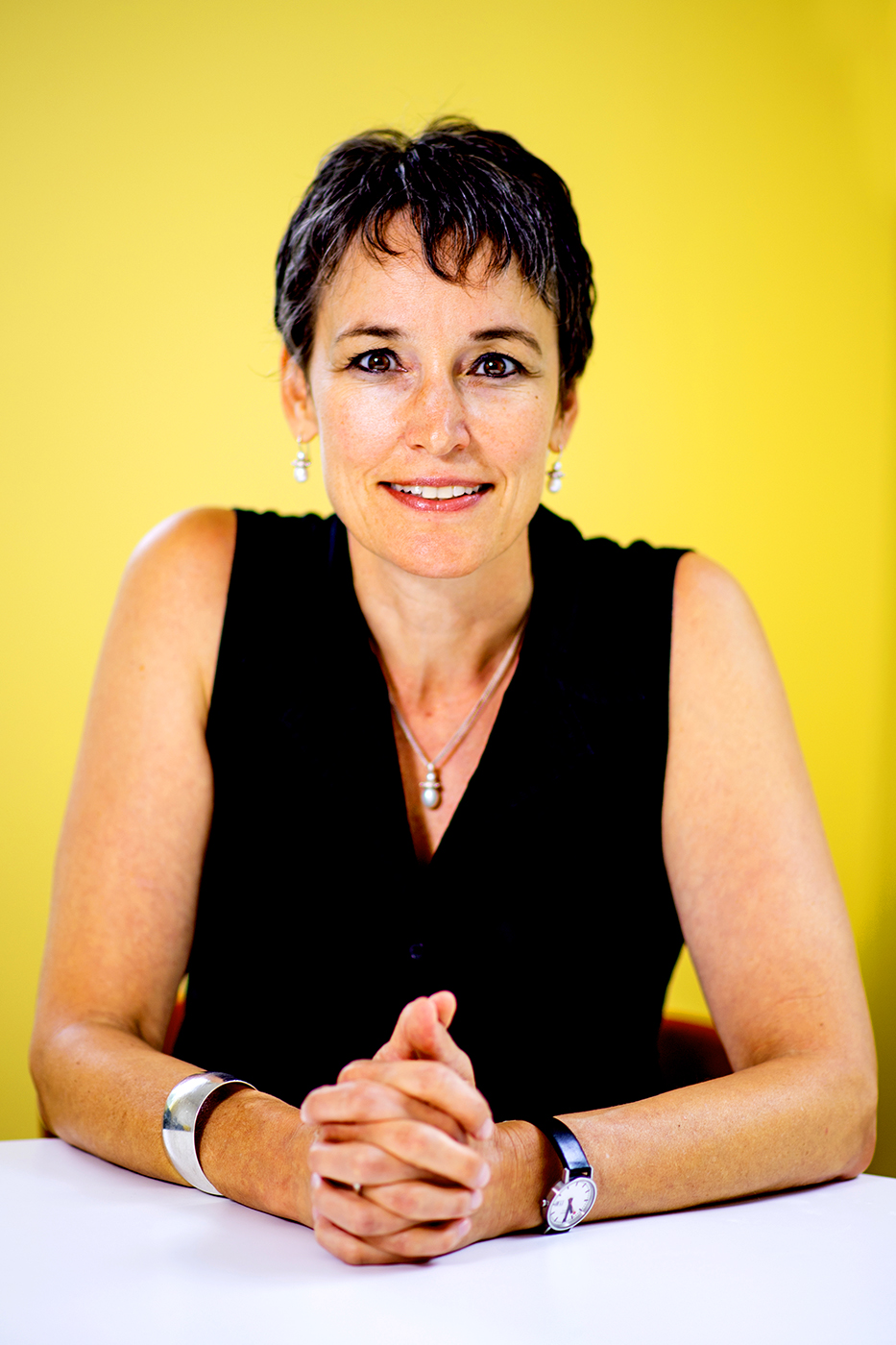How gender bias excludes women from international scientific collaboration

As our world becomes increasingly interconnected, and as technology makes it easier to talk to each other across continents, the field of science is becoming more and more global. International collaboration among scientists is on the rise, according to a report from the United Nations Educational, Scientific, and Cultural Organization.
But even such broad collaboration is subject to gender biases that are embedded in the very structure and culture of global science, says Kathrin Zippel, who is a professor of sociology at Northeastern University. Another UNESCO report shows that women comprise less than 30 percent of the world’s researchers.

“It’s a huge honor to receive this award for the kind of research I’m doing,” Zippel says. Photo by Matthew Modoono/Northeastern University
“When we talk about the underrepresentation of women in STEM [science, technology, engineering, and math] fields, we’re dealing with a global phenomenon. Global science and academia are the new frontiers for women,” Zippel says.
All too often, she says, cultural or social stereotypes about who can be a serious scientist lock women out of collaborative research projects that are necessary for scientific discovery.
Zippel has dedicated her own research to examining gender inequality in academic institutions and exploring ways to mitigate it. For her work, she recently won a prestigious international award, the Humboldt Alumni Award for Innovative Networking Initiatives. She was presented with the award by German Chancellor Angela Merkel at the annual meeting of the Alexander von Humboldt Foundation (named after the Prussian polymath).
During her remarks, Merkel emphasized the importance of “international networking,” Zippel says, in effect driving home the central thesis of Zippel’s work.
Zippel has found that as international collaboration among scientists becomes the norm, it provides both challenges and opportunities for women.
For example, Zippel says, the United States is perceived “as the gold standard in science” around the world. This provides an opportunity for women from the U.S. to collaborate in science with their international counterparts because their status as a scientist from the U.S. “becomes more salient than their gender,” she says.
However, it poses a challenge for scientists from other countries who find themselves twice marginalized: both as women and as non-U.S. scientists.
“I call this the ‘dot edu’ bonus,” Zippel says, referring to the final piece of a web address from an academic institution based in the United States. “If you’re affiliated with an American institution, your website and email have a ‘.edu’ at the end. In other parts of the world, those web addresses end in a country code.”
The difference, though subtle, sets a tone for scientific research, Zippel says: Academic institutions in the U.S. are marked simply as academic institutions online. Everywhere else, they’re marked online as belonging to a specific country.
“The U.S. stands for the norm,” she says.
So, as international collaboration quickly becomes essential for academic and scientific research, how are women to overcome biases such as these, that are ingrained in the system? For Zippel the answer is more collaboration.
She’s studying the differences in public policy related to gender equality in both the U.S. and European Union to look for what’s working to promote equity and what isn’t. She’s also analyzing a program created by the U.S. National Science Foundation that is meant to bolster the ranks of women with academic careers in science and engineering within American universities by transforming the institutions’ hiring and promotion systems. Is the program really doing what it set out to do? That’s what Zippel is looking into now, in a research project funded by the NSF.
And, with the Humboldt Award, she has access to a plethora of scientific conferences around the world, to which she can bring junior researchers “to help expose them to potential international colleagues,” Zippel says.
“It’s a huge honor to receive this award for the kind of research I’m doing,” she says.
For media inquiries, please contact media@northeastern.edu.





